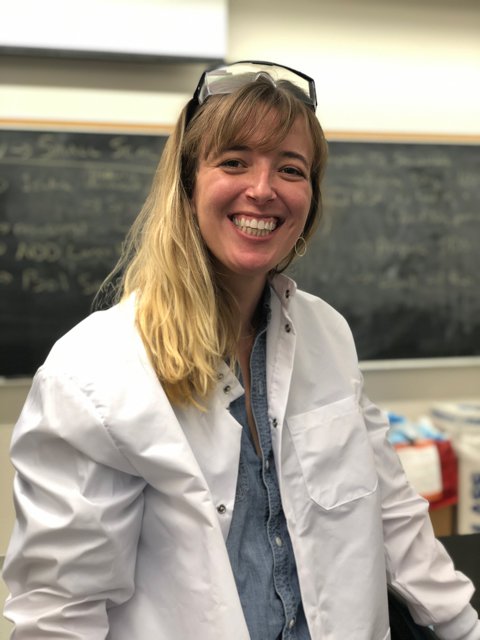Hehnly Lab Awarded $1.2M NIH Grant to Research Critical Tissue Formation
The team’s research seeks to identify molecular targets to treat developmental disorders.

A key process during the development of an embryo is tissue morphogenesis, where the number of cells in an organism increase through cell division and tissues begins to take shape. Heidi Hehnly, assistant professor of biology, has been awarded a $1.2 million grant from the National Institutes of Health for her group’s research to determine the mechanisms behind the formation of tissues with a lumen, which is a hollow passageway. Organs with these tubular passageways include the heart, kidney and gastrointestinal tract.
The placement of these organs in an organism are determined through left-right (LR) patterning. When that process gets disrupted, it can result in developmental disorders such as congenital heart defects. Hehnly and her team will identify the role of cell division, specifically the last stage known as cytokinesis, during tissue development of the Kupffer’s vesicle (KV), the organ responsible for LR patterning in the zebrafish.
They hypothesize that the structure that connects daughter cells during the last stages of the cell division process is essential to helping the cells “decide” where lumen passageways should form. That structure is also crucial for determining when to extend small hairlike cilia into that luminal space within a developing tissue. The left-right beating movement of these cilia within the KV lumen play an important role in establishing precise left-right asymmetry in the developing embryo.
The team’s results may identify molecular targets for treatment of developmental disorders associated with LR patterning defects, such as situs inversus, where major visceral organs are reversed or mirrored from their normal positions, and heterotaxy, where internal organs are not arranged properly in the chest and abdomen.
In addition, identifying the cellular mechanisms associated with cilia formation will likely pinpoint the cause of certain ciliopathies, which are human disorders that arise from the abnormal function of cilia that extend from the top of the cell into the lumen. Patients suffering from these disorders can experience defects in LR asymmetry, congenital cardiac defects, and/or formation of cysts in multiple organs.
This is the Hehnly Lab’s second NIH grant at Syracuse University, the first being a $1.7 million award that expands upon Hehnly’s research program into the origins of ciliopathies. She also received a $562,000 grant from the Department of Defense to research the role of a protein called Polo Like Kinase 1 (PLK1) in prostate cancer.
Featured
Heidi Hehnly Renée Crown Professor in the Sciences and Mathematics and Associate Professor
